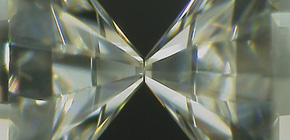
Plasma phase transition was observed in hot dense fluid hydrogen
Creation of Jupiter interior, a step towards room temperature superconductivity
OHTA Kenji (Instructor, Graduate School of Science and Engineering, Tokyo Institute of Technology)
SHIMIZU Katsuya (Professor, Center for Science and Technology under Extreme Conditions, Graduate School of Engineering Science)
A team of researchers developed technology which stabilizes hydrogen in a high-temperature, high-pressure environment without chemical reactions with surrounding matter.
Through the use of this technology, in collaboration with the Japan Synchrotron Radiation Research Institute, this group observed the phase transition from a diatomic to monoatomic fluid hydrogen (plasma phase transition) in the pressure range between 82 and 106 GPa, elucidating the phase boundaries.
The observed plasma phase transition of high-temperature, high-density hydrogen fluid may be strongly related to insulator-metal transition, and these results may lead to the clarification of the internal structure and magnetic field of gas planets primarily made up of hydrogen, such as Jupiter and Saturn.
Additionally, it is expected that the clarification of the correlation between temperature and pressure in hydrogen will lead to the synthesis of a solid metallic hydrogen in which superconductor transition is expected to take place at a relatively high temperature, or nearly room temperature.
Abstract
We investigated the phase transformation of hot dense fluid hydrogen using static high-pressure laser-heating experiments in a laser-heated diamond anvil cell. The results show anomalies in the heating efficiency that are likely to be attributed to the phase transition from a diatomic to monoatomic fluid hydrogen (plasma phase transition) in the pressure range between 82 and 106GPa. This study imposes tighter constraints on the location of the hydrogen plasma phase transition boundary and suggests higher critical point than that predicted by the theoretical calculations.

Figure 1: Laser-heat diamond-anvil cell (A), and anvil in the cell (B) We can create the pressure-temperature condition of the earth core by laser-heating the compressed sample in the cell.

Figure 2: Phase diagram of dense hydrogen.
For the plasma phase transition boundary, we show a range of curves resulting from reported theoretical calculations by black broken lines. The predicted position of the critical point is indicated by dotted box.
Melting curve and phase boundaries of solid hydrogen are taken from the literature. Cross and plus symbols represent P-T conditions at which electrical conductivities were measured under shock compression.
To learn more about this research, please view the full research report entitled "Phase boundary of hot dense fluid hydrogen" at this page of the Nature's Scientific Reports website.
Related links
- High Pressure Science, Center for Science and Technology under Extreme Conditions, Graduate School of Engineering Science, Osaka University (Shimizu Laboratory)
- Ohta Group, High-pressure Mineral Physics Lab, Department of Earth and Planetary Sciences, Graduate School of Science and Engineering, Tokyo Institute of Technology
- Spring 8 News Release
- EurekAlert!

